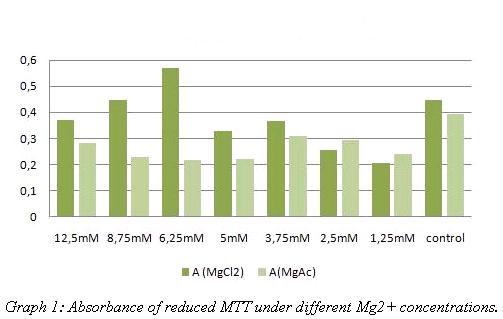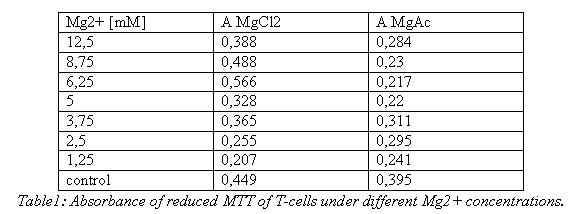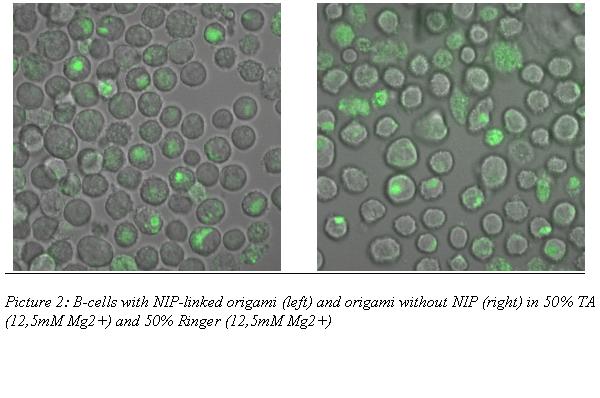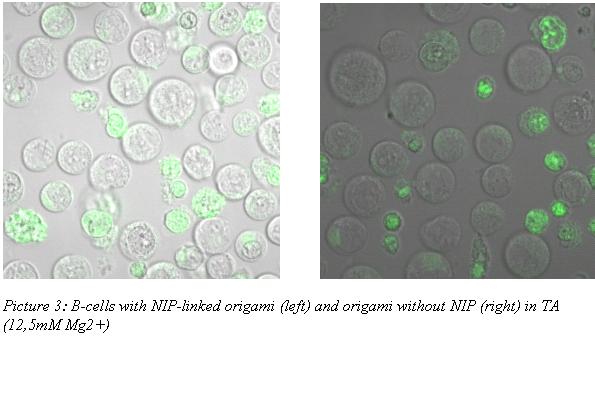Team:Freiburg Cell Culture
From 2008.igem.org
(Difference between revisions)
| Line 33: | Line 33: | ||
[[Image:FreiGEM293tTabelle1.JPG]] | [[Image:FreiGEM293tTabelle1.JPG]] | ||
<br> | <br> | ||
| - | + | <br> | |
'''Detection of the receptor-NIP linkage'''<br><br>[[Image:Bc_50ringer50ta.JPG]]<br> | '''Detection of the receptor-NIP linkage'''<br><br>[[Image:Bc_50ringer50ta.JPG]]<br> | ||
<br>[[Image:FreigemBcta.JPG]]<br><br> | <br>[[Image:FreigemBcta.JPG]]<br><br> | ||
| Line 39: | Line 39: | ||
'''Mg2+-tolerance-tests'''<br><br>The MTT assays and the trypan blue staining proofed the tolerance of the used cells towards a concentration up to 12,5mM Mg2+. This is the exact concentration in which the origami are produced and stored. The lower absorbance in the tests with TA could possibly come from the removal of the TA-buffer because it seemed that the TA buffer disturbs the adhesion of the 293t cells to the ground of the well so that some cells might be sucked off with the TA.<br> | '''Mg2+-tolerance-tests'''<br><br>The MTT assays and the trypan blue staining proofed the tolerance of the used cells towards a concentration up to 12,5mM Mg2+. This is the exact concentration in which the origami are produced and stored. The lower absorbance in the tests with TA could possibly come from the removal of the TA-buffer because it seemed that the TA buffer disturbs the adhesion of the 293t cells to the ground of the well so that some cells might be sucked off with the TA.<br> | ||
<br> | <br> | ||
| - | |||
'''Detection of the receptor-NIP linkage'''<br><br> | '''Detection of the receptor-NIP linkage'''<br><br> | ||
During the binding measurements it seemed that the origamis were absorbed by the cells or that they bind unspecifically. Later tests at the AFM showed no functional origami which could be an explanation to the behaviour of the cells. The expanded form of the b-cells in TA-buffer showed that sole TA-buffer is osmotically disadvantageous for the cells. | During the binding measurements it seemed that the origamis were absorbed by the cells or that they bind unspecifically. Later tests at the AFM showed no functional origami which could be an explanation to the behaviour of the cells. The expanded form of the b-cells in TA-buffer showed that sole TA-buffer is osmotically disadvantageous for the cells. | ||
Revision as of 17:44, 28 October 2008
 "
"





